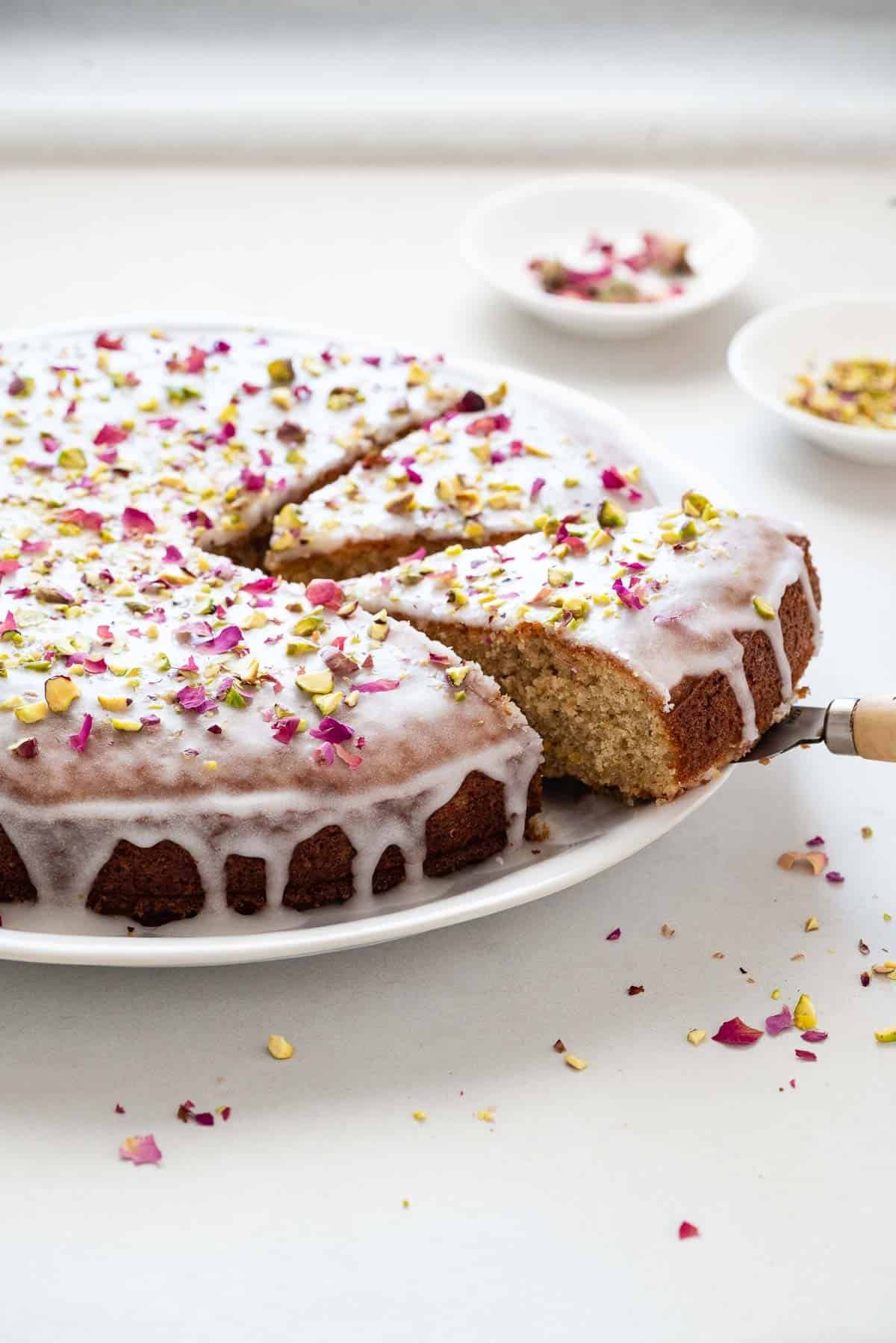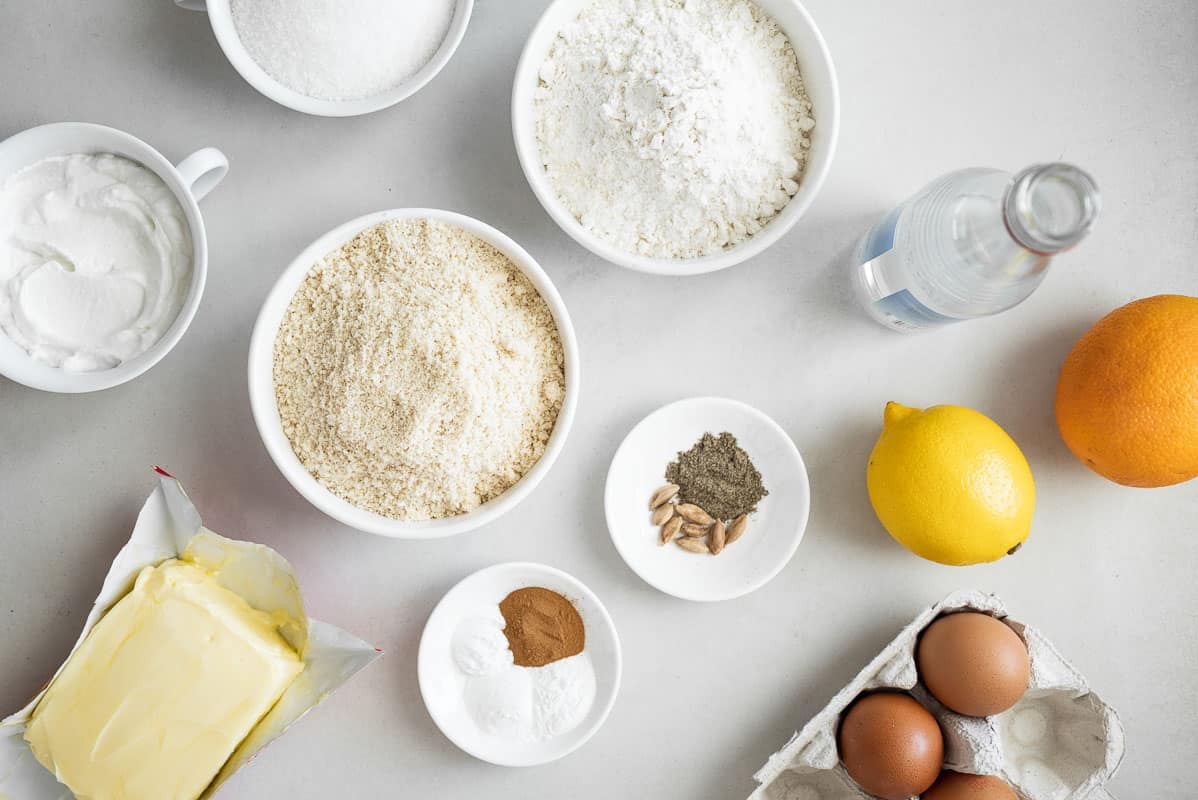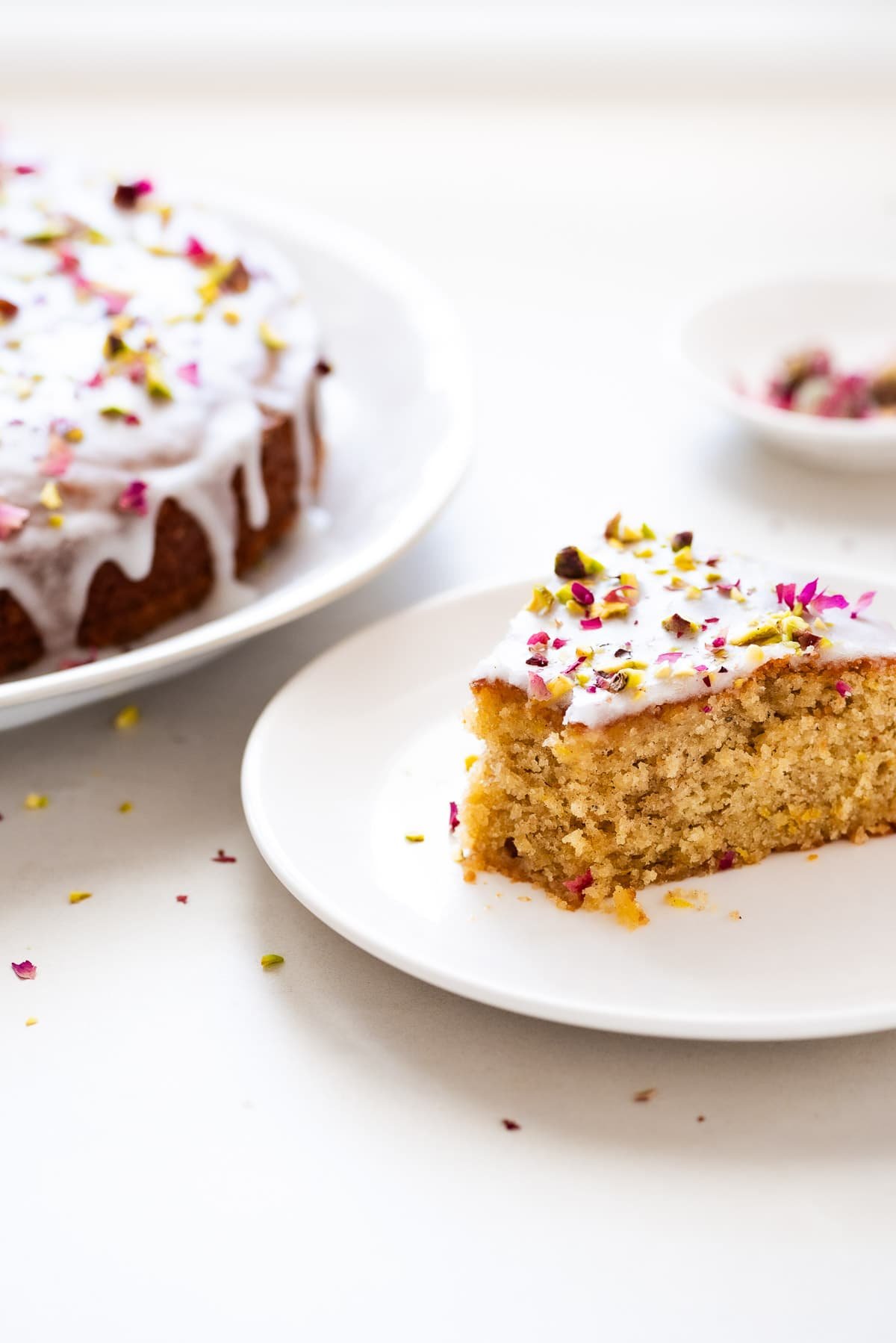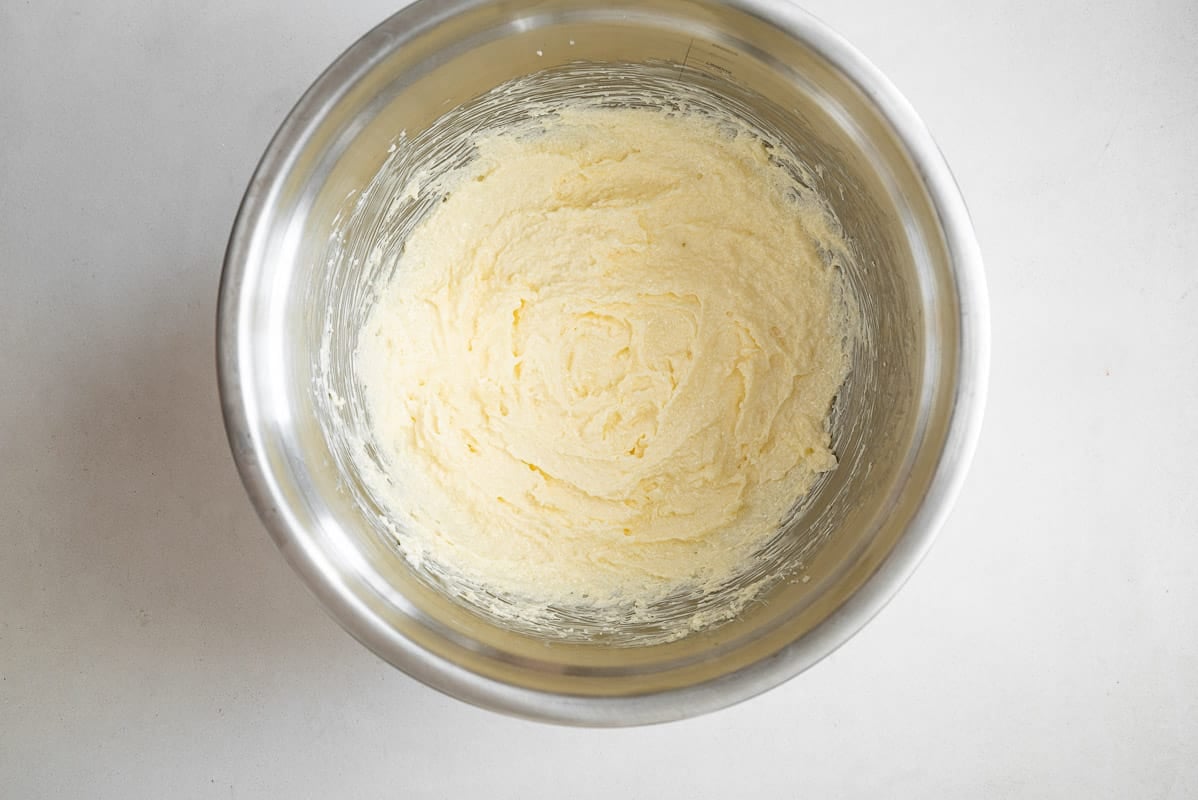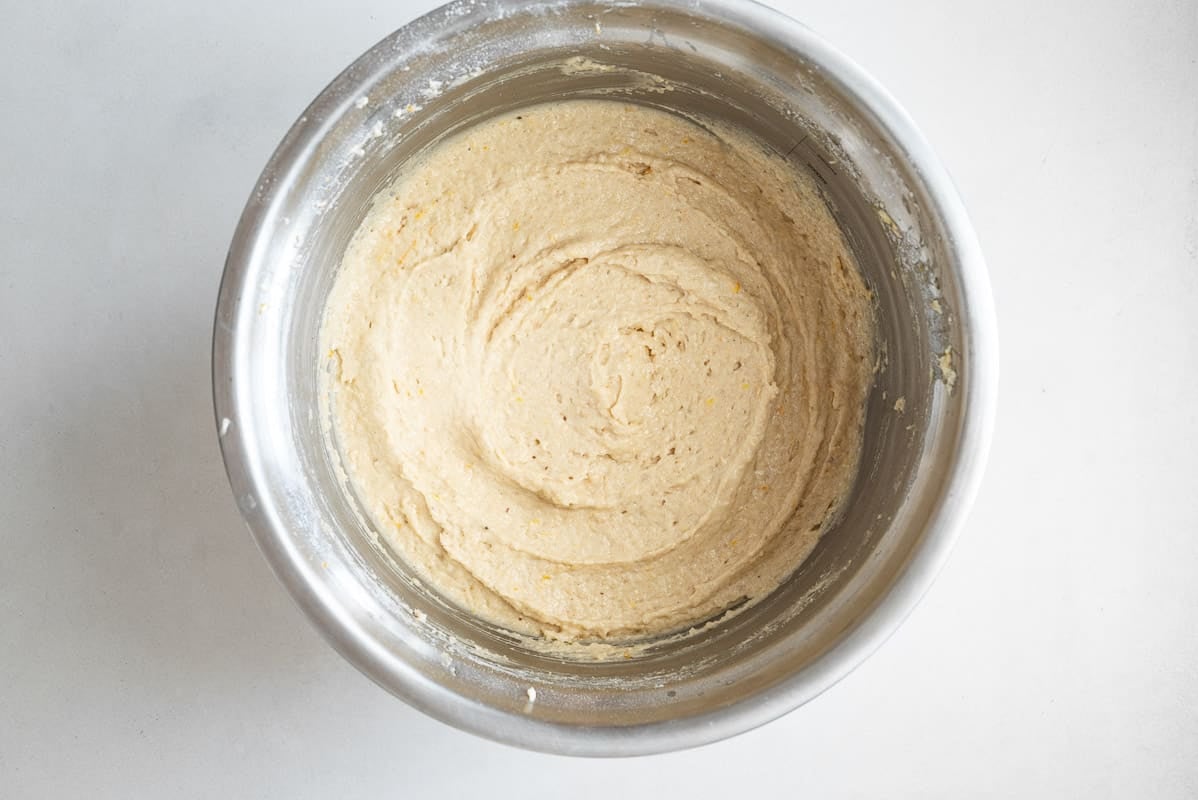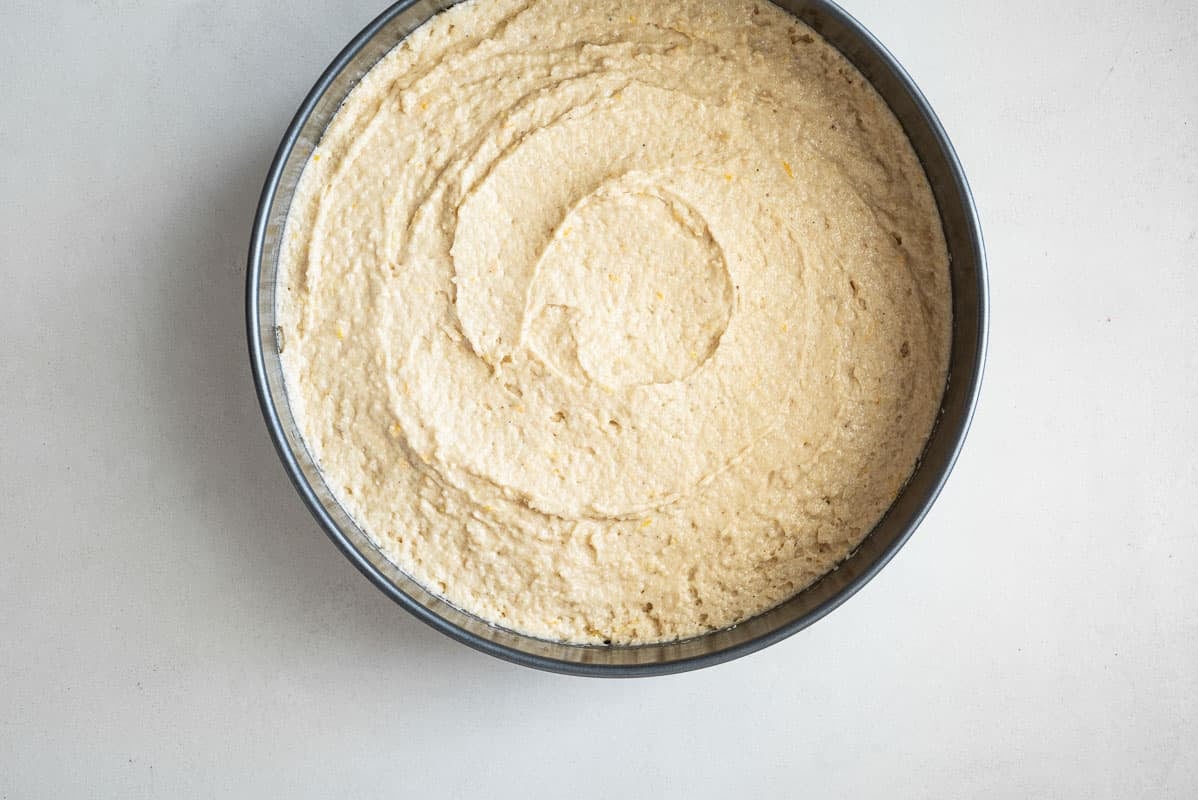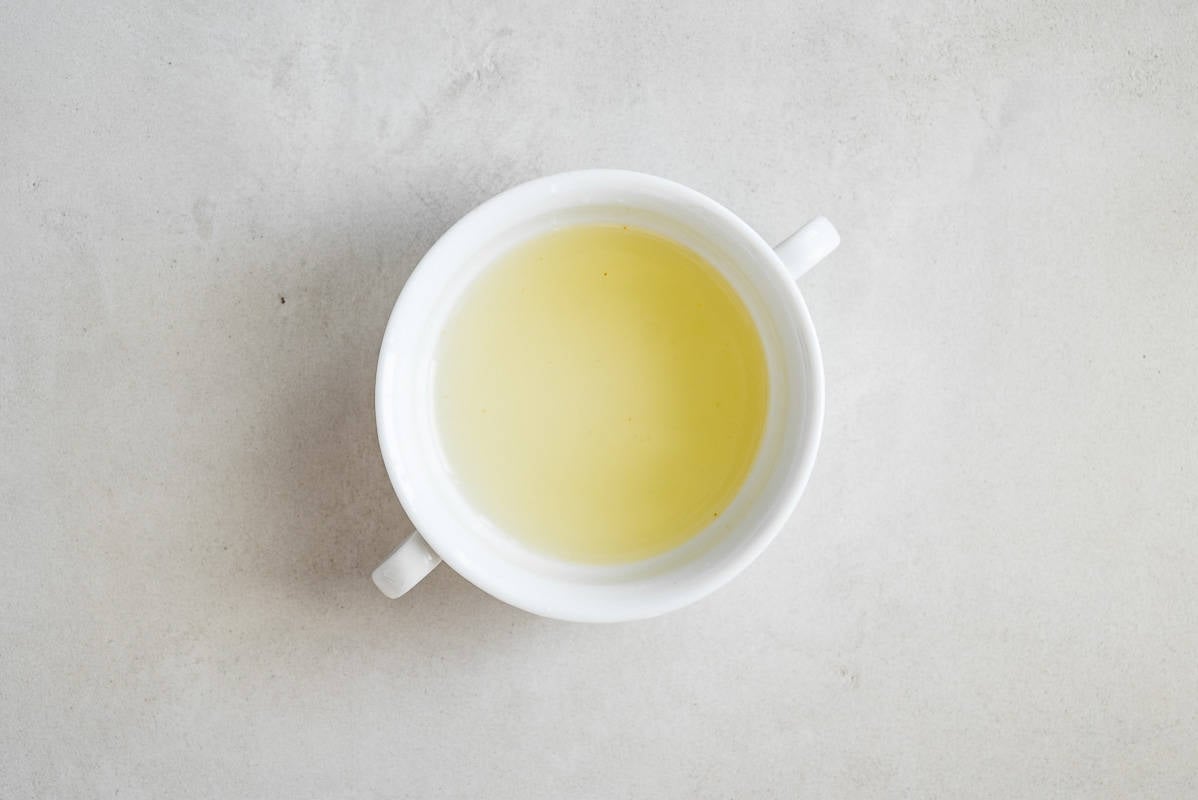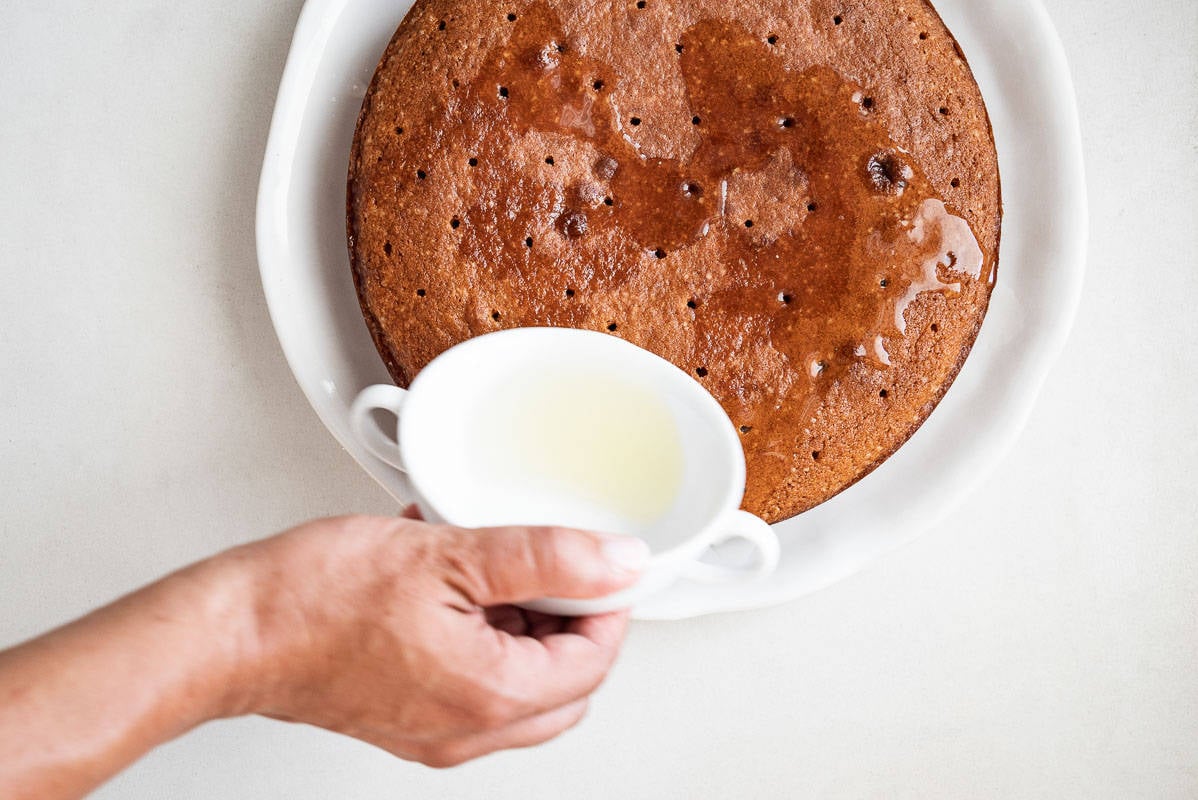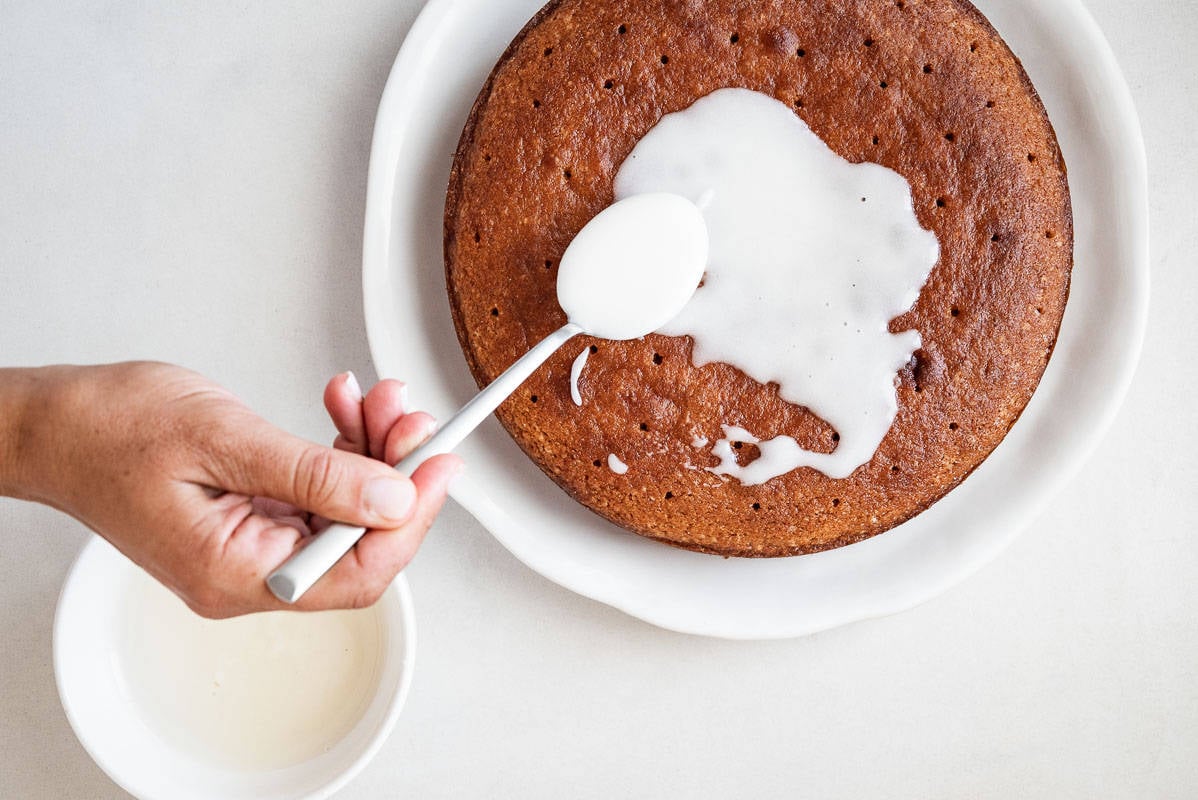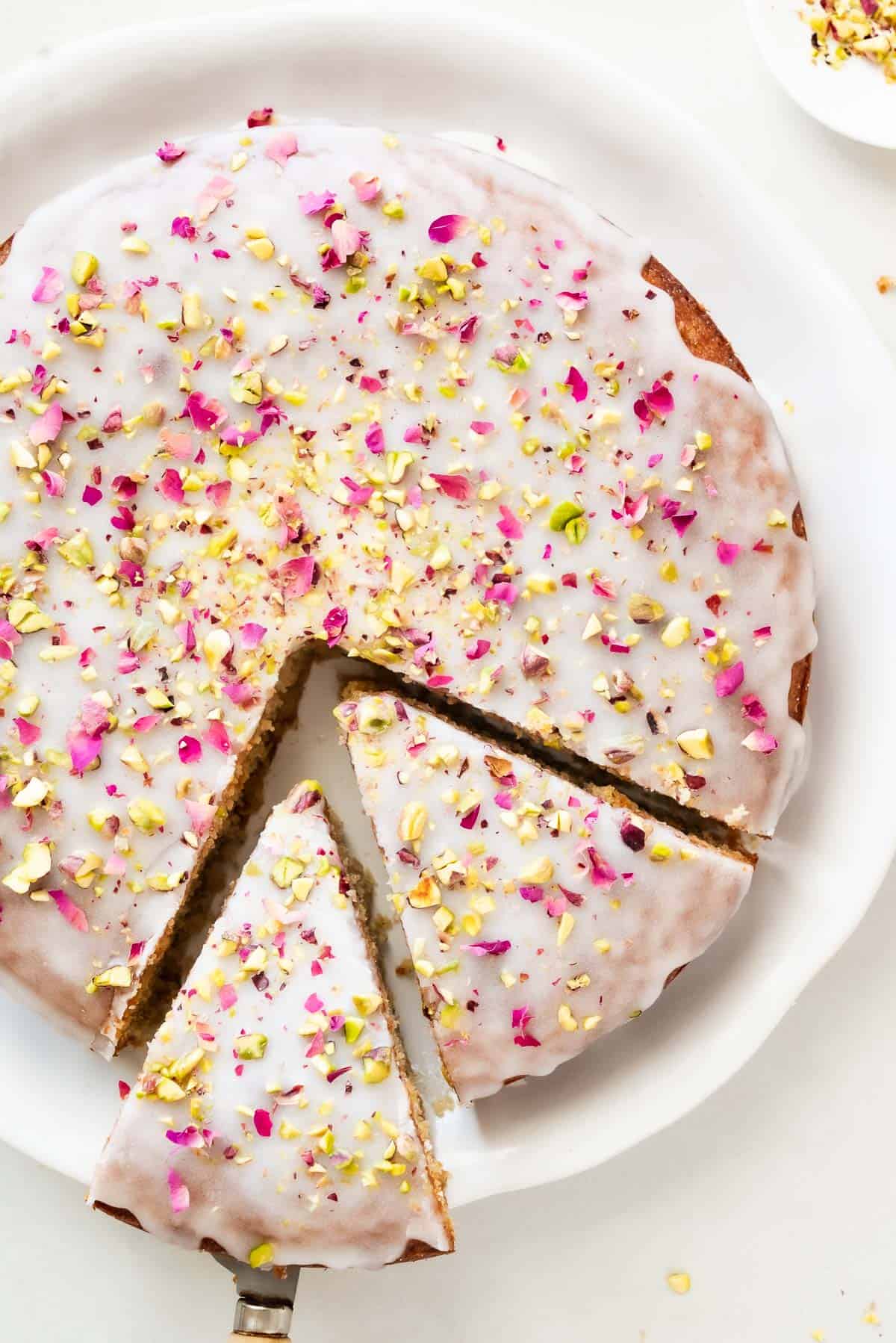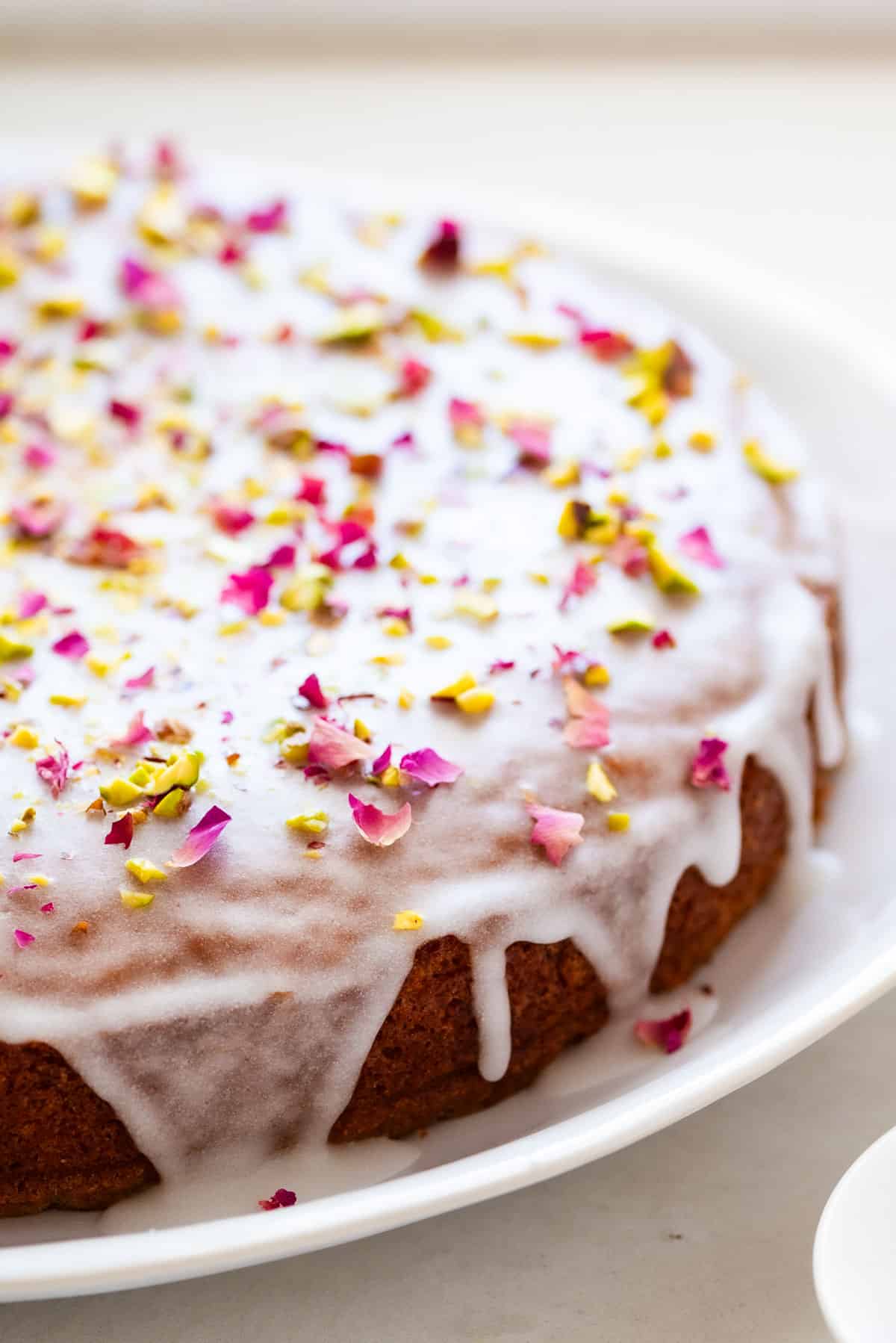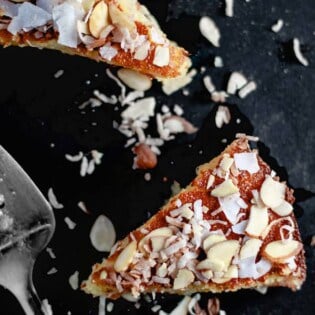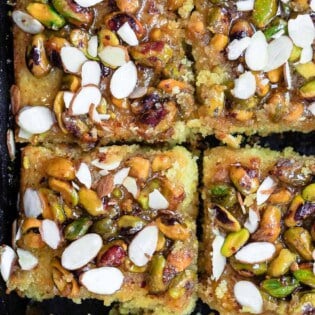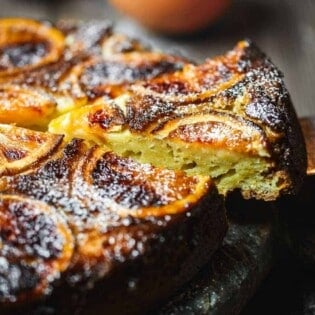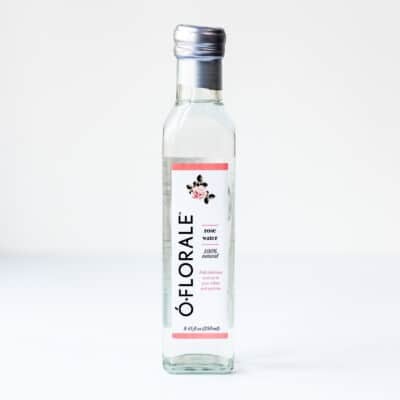The exact origin story of Persian Love Cake is unknown. One theory, suggests it’s a well traveled adaptation of the Portuguese Love Cake, Bolo di Amor, which in the 16th century was transformed by Sri Lankans into a semolina cake often served at Christmastime. From there the cake eventually made its way to Iran, where it evolved further with the addition of rosewater, a flavoring very familiar to the Middle Eastern palette. Once in Iran, the story becomes a legend stating that Persian love cake came about when a young Persian woman fell in love with a prince. To make him fall in love with her, she baked a cake infused with aromatic spices and rose water. To complicate matters further, many Iranians are not familiar with the cake. Most of us were introduced to it through our Western upbringing, me included. However I’m so glad this delightful dessert has become part of my modern Persian life. Regardless, of how this beautifully flavored dessert began, Persian love cake is a divine addition to your catalog of cake recipes. With nutty almond flour, a not-too-sweet lemony glaze, and aromatic warming spices, this sophisticated dessert is universally adored by everyone in my family!
Persian Love Cake Ingredients
Most of the ingredients required for this cake are readily available in well-stocked supermarkets, with the exception of edible dried rose petals. Luckily, you can find dried rose petals in Middle-Eastern markets, online, or you can leave them off.
Almond flour: Also known as almond meal, almond flour is made from finely ground skinned almonds. Ground almonds give the cake a moist, crumbly texture and nutty flavor. All-purpose flour: Made from wheat, all-purpose flour provides structure to the cake. You can use a gluten-free all-purpose flour blend, however, the cake will be denser than the original. Baking powder and baking soda: Help the cake to rise and to create an airy texture. Unsalted butter: Adds stability and flavor to the cake. Make sure the butter is soft (around room temperature) before creaming with the sugar, which allows you to incorporate air more easily. Superfine sugar: Also known as caster or castor sugar, superfine sugar’s fine grain allows it to dissolve easily. However, regular granulated sugar will also work just fine in this recipe. Eggs: Eggs add structure and richness to the cake. Greek yogurt: Makes the cake lighter and adds a tangy flavor to balance the sweetness. Rose water: Adds a distinct floral flavor to the cake. You can find it in the baking or international foods aisle, or find our favorite all-natural rose water from our shop. Feel free to adjust rosewater quantities up or down to your taste. Citrus: The juice and zest of fresh orange and lemon adds a burst of bright flavor and aroma. Cardamom and cinnamon: Ground cardamom and cinnamon give the cake a warming and aromatic flavor profile. Powdered sugar: Powdered sugar, mixed with lemon juice and a dash of rose water, provides a simple yet elegant glaze for this cake. Garnish: Dried edible rose petals and crushed pistachios decorate the cake. Make sure the pistachios are raw and unsalted. Most specialist Middle-Eastern food shops have dried rose petals if you can’t find them in your local supermarket, or you can leave them off.
How to Make This Cake Recipe
To make this Persian love cake, you’ll need one 9-inch cake pan and parchment paper. However, if you have a 10-inch cake pan don’t worry it will still work just fine. Just check on the cake 5 minutes earlier. It’s ready when a toothpick inserted in the center comes out clean.
Make the Batter
Get ready. Preheat your oven to 350°F. Butter the bottom and sides of your cake pan and line the bottom with parchment paper. Sift together dry ingredients: Set a fine mesh sieve or sifter over a large bowl. To the sieve add 1 1/4 cup all purpose flour, 2 teaspoons baking powder, 1/2 teaspoon baking soda, 1 teaspoon ground cinnamon, and 1/2 teaspoon ground cardamom. Tap the sieve with the palm of your hand until everything falls into a fine powder in the bowl. Add 1 3/4 cup almond flour and use a whisk to combine. Cream the butter and sugar. Fit a stand mixer with the paddle attachment or an electric hand mixer with the beaters. To a large bowl or a bowl of a stand mixer, add 8 tablespoons of softened butter and 1 cup of sugar. Beat on medium high until the mixture is pale, light and fluffy, about 5 minutes. Use a rubber spatula to scrape down the sides of the bowl about halfway through. The goal is to incorporate air into the mixture. Add the eggs and yogurt. Add 4 eggs to the butter mixture one at a time. Mix each until fully incorporated, scraping down the sides of the bowl with a rubber spatula between each addition. Add 1/2 cup of yogurt and beat again until fully incorporated. Scrape down the sides of the bowl. Add the zest and juice of 1/2 lemon and 1/2 orange, and 1 tablespoon of rosewater. Mix again. Combine: Add the dry ingredients to the wet. Beat until the batter becomes thick and cohesive, scraping down the sides of the bowl when needed. This should only take a minute or two.
Bake, Soak, and Decorate the Cake
Bake the cake. Spoon the mixture into the prepared cake pan. Use the back of a spoon to spread the batter evenly. Bake for 40 minutes, or until the cake is well risen and a skewer inserted into the middle comes out clean. Cool. Leave the cake to cool in the pan for 2 minutes, then carefully turn out onto a wire rack. Remove the parchment and leave it to cool completely, about 1 hour. Add the lemon drizzle. In a medium bowl, whisk together the sugar, lemon juice and rosewater until the sugar is completely dissolved. Soak the cake. Use a thin skewer or toothpick to poke tiny holes evenly across the surface of the cake. Pour the lemon drizzle across the cake and let it soak in.
Make the glaze and decorate the cake. Gently stir the icing sugar with enough lemon juice to make icing that’s smooth and thick yet pourable. Stir in a few drops of rosewater to taste. Ice the cake. Spoon the icing over the cake, allowing it to run down the sides. Leave for 5 minutes for the icing to set slightly and then decorate with rose petals and pistachios. Leave to set completely before slicing and serving.
A Note about Rose Water
High quality rosewaters don’t have an strong alcoholic smell or flavor. You really just want the essence of rose captured in water. If yours has an alcohol hit to your nose when you open it, reduce measurement down from 1 tablespoon to 1 to 2 teaspoons for the cake batter and one drop for the glaze and drizzle. To learn more about rose water read: What Is Rose Water And How Do You Use It? Once you get the hang of using rose water you’ll add it to so many recipes to make them just a little more wonderful. Try it in everything from drinks, like this Strawberry Lemonade, candy like Turkish Delight, desserts like Mahalabia, a milk pudding, or a fruity side like Strawberry Compote.
Variations to this Persian Love Cake Recipe
The recipe below accounts for both a lemony drizzle and then a glaze to top the cake, which makes it extra decadent and flavorful. If you’d like a simpler cake, you can skip either the drizzle or the glaze. You can add ground pistachios to the cake mixture before baking to add further richness to the cake. Just replace half of the almond flour with the equivalent weight in ground pistachios. If you are not a fan of rose water, you can use orange blossom water as an alternative. This cake is also delicious without the rose water, simply flavored with the warming spices.
What to Serve with Persian Love Cake
With a light sponge, this cake suits all seasons. Follow a Middle Eastern-themed dinner party starting with Whole Roasted Cauliflower with Lemony Whipped Feta, Easy Pita Bread and Tabouli Salad (Tabbouleh). This cake also makes a lovely addition to an afternoon tea with friends. Serve with coffee or Arabic Tea with Fresh Mint. Browse all Mediterranean recipes.
Basbousa: Almond Coconut Semolina Cake Recipe
Healthy Carrot Cake
Greek Honey Cake with Orange and Pistachios
Italian-Inspired Orange Ricotta Cake
Visit Our Shop. Made using a time-honored distillation process, a splash adds a delicate and aromatic quality to sweet and savory dishes, from compotes and rice pudding to ice-cold lemonade.



